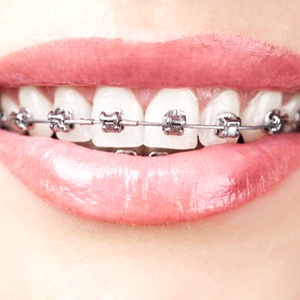Comprehensive Guide to Orthodontics Treatments for Correcting Dental Imbalances
Understanding the details of each procedure, including their devices, benefits, and prospective disadvantages, is essential in making notified decisions concerning one's orthodontic treatment. As we browse via the detailed guide to orthodontic treatments for remedying dental misalignments, the detailed information of each technique will certainly unravel, shedding light on the course towards a practical and unified oral alignment.
Orthodontic Procedures Introduction

Normal changes and monitoring are vital components of orthodontic treatment to make certain progress is on track and to make any required alterations along the method. By undertaking orthodontic procedures, patients can not just attain a straighter smile yet also improve their total dental health and feature.
Conventional Braces: Just How They Function
When thinking about orthodontic treatments for oral misalignments, standard braces stand out as a reliable method for remedying teeth positioning. Conventional braces are composed of braces, cords, and bands that function with each other to apply continual stress on the teeth, gradually relocating them into the preferred alignment.
As stress is used to the teeth via the dental braces, the bone bordering the teeth is reshaped to support the brand-new tooth settings. People will need normal adjustments at the orthodontist's office to make sure the braces proceed to use the right stress for effective teeth activity.
Invisible Aligners: Benefits And Drawbacks
Unnoticeable aligners provide a convenient and discreet choice to traditional dental braces for remedying oral misalignments. These clear, personalized trays are basically unseen when put on, making them an attractive choice for people looking for an extra aesthetically pleasing orthodontic treatment. Among the primary benefits of invisible aligners is their removability, enabling much easier upkeep of dental hygiene compared to standard braces. People can remove the aligners prior to consuming or cleaning their teeth, lowering the danger of food getting stuck in the appliance and simplifying the cleaning process.

Surgical Orthodontic Options
Surgical interventions in orthodontics present sensible options for resolving intricate oral misalignments that may not be properly dealt with through standard orthodontic therapies. While traditional braces and undetectable aligners can fix lots of orthodontic issues, particular situations require surgical treatment to accomplish optimal outcomes. Surgical orthodontic alternatives are usually advised for extreme malocclusions, considerable jaw discrepancies, and situations where the underlying bone structure requires alteration to accomplish correct alignment.
One typical surgical orthodontic treatment is orthognathic surgical procedure, which entails repositioning the jaws to fix useful concerns such as difficulty talking or eating. This surgical treatment click reference is typically carried out in hop over to here collaboration with an orthodontist that helps straighten the teeth before and after the treatment. Surgical orthodontics may additionally entail procedures to subject influenced teeth, get rid of excess gum tissue, or reshape the jawbone to produce a more unified face profile.
Prior to taking into consideration surgical orthodontic options, people undertake an extensive assessment to identify the need and possible benefits of such interventions. cumming braces. While surgical treatment may seem challenging, it can substantially enhance both the function and aesthetics of the smile in instances where standard orthodontic therapies drop short
Retainers and Post-Treatment Care

Failing to comply with post-treatment care directions can result in relapse, where the teeth slowly relocate back towards their initial positions. Regular retainer wear, great dental hygiene, and regular oral exams are important for keeping the outcomes achieved via orthodontic surgical procedure and making certain the lasting stability of the corrected dental placement.
Final Thought
To conclude, orthodontic procedures supply numerous options for correcting oral imbalances. Traditional braces use steel braces and cords to shift teeth into proper alignment. Unseen aligners supply a more very discreet choice but may not appropriate for all situations. Surgical orthodontic choices are offered for much more severe misalignments. Retainers are typically used post-treatment to preserve the new placement. In general, orthodontic procedures can efficiently enhance oral health and wellness and visual appearance.
As we browse with the thorough overview to orthodontic procedures for fixing oral misalignments, the intricate information of each technique will unravel, losing light on the path toward a functional and unified oral alignment. - braces
One of the most typical orthodontic treatments is the use of braces, which consist of steel brackets and cords that use gentle stress to progressively move teeth into the preferred placement.When considering orthodontic treatments for oral misalignments, traditional braces stand out as a time-tested method for remedying teeth placing. In addition, invisible aligners might not be suitable for complicated orthodontic problems ppo dentist near me that need more substantial teeth activity, as they are typically suggested for mild to moderate situations. Retainers are custom-made orthodontic gadgets made to hold teeth in their corrected positions after the conclusion of orthodontic treatment.